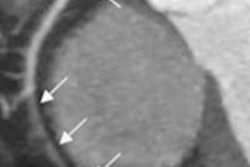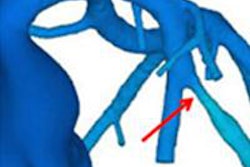Dear AuntMinnie Member,
Perhaps flush with its success in putting the federal government's financial house in order, the U.S. Congress is now turning its eye to the regulation of mobile medical apps.
Members of the House of Representatives this week debated a bill that would strip the authority to regulate certain types of mobile medical apps from the U.S. Food and Drug Administration (FDA), which only in September proposed a new scheme for app regulation. While the FDA would continue to regulate apps used directly in patient care, the bill would remove from the agency's purview consumer healthcare apps and apps for analysis of medical data.
The goal of the bill is to foster innovation in mobile medical app development, but opponents of the legislation believe it could have unintended consequences. For example, some software applications already regulated by the FDA, such as computer-aided detection apps and radiation therapy planning software, might no longer require FDA clearance.
The legislation would still have to clear a number of hurdles to become law, and it's difficult to see that happening in today's divided Congress. But even if it doesn't succeed, the FDA will most likely experience pushback to its drive to revamp rules for regulating mobile medical technology.
Read more by clicking here, or visit our Advanced Visualization Digital Community at av.auntminnie.com.
FDA warning on stress agents
In other news, the FDA this week issued a warning on possible patient safety issues with two of the most commonly used pharmacological stress agents in nuclear cardiac imaging.
In a November 20 guidance, the FDA said that the Lexiscan and Adenoscan agents could have a "rare but serious risk of heart attack" and should be avoided in some types of patients, particularly those with signs of unstable angina or cardiovascular instability. The agency issued the warning after a review of its adverse event reporting database for both products.
The FDA ordered changes to the labeling for both Lexiscan and Adenoscan, and advised clinicians to screen patients to ensure that they can tolerate the products. Learn more by clicking here, or visit our Molecular Imaging Digital Community at molecular.auntminnie.com.
CT, 3D printing, and dinosaur fossils
What do CT, 3D printing, and dinosaur fossils all have in common? Well, they are the subject of a new article in our CT Digital Community by staff writer Nicole Pettit.
What's the connection? German researchers wanted to find a way to investigate dinosaur fossils without damaging them. CT has been used in the past for nondestructive scanning of fossils and antiquities, but such scans produce images that have to be viewed on a monitor rather than actual physical copies that can be handled.
Enter 3D printing, a burgeoning new technology that enables actual physical models to be produced from 3D data such as medical imaging scans. The researchers thought that their CT technique combined with 3D printing could be a great way to create exact copies of dinosaur fossils without having to remove them from the sediment they were encased in.
Find out how well their approach works by clicking here, or visit our CT Digital Community at ct.auntminnie.com.



















